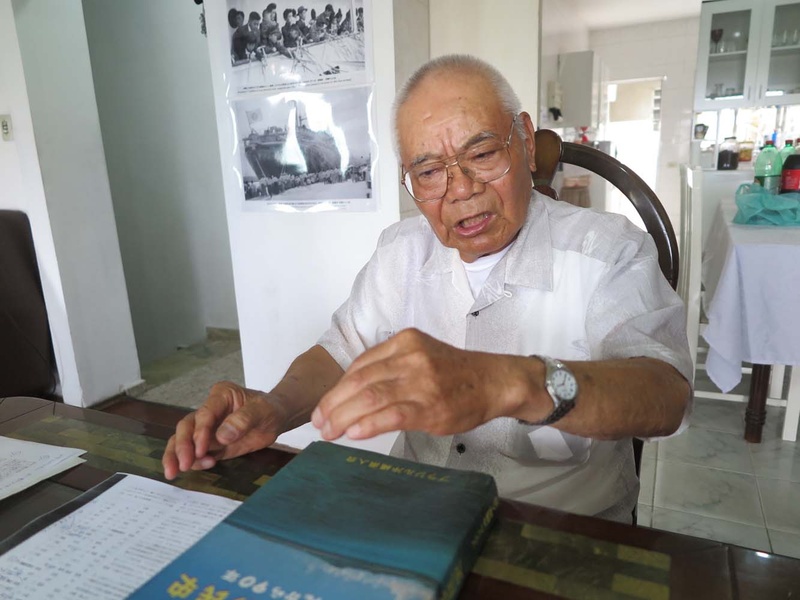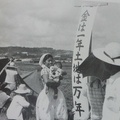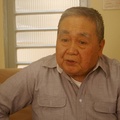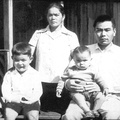"I don't really want to talk about the war or the land struggle," said Anshin Sawatani (85), one of the immigrants from Isahama. When I interviewed him at the home of an acquaintance at the end of last year, he began to talk little by little about his wartime experiences, as he was urged in Uchinaaguchi (the Okinawan dialect) by a person from the same prefecture who was also there.
In April 1945, during the fierce Battle of Okinawa, Sawaki was 13 years old. He was hiding with his mother, younger brother and sister in a natural cave near the Futenma Shrine when they received instructions from Japanese soldiers to evacuate to another location because the U.S. military was approaching. So they walked along a dark road at night.
Suddenly, flares went off and the area became as bright as day. At the same time, we heard the sound of machine gun fire and the people who had been evacuating with us were shot and fell one by one.
He lost his mother, brother and sister during this time. Sawatari returned to the natural shelter, but was found by the US military the following morning and taken prisoner. He was reunited with his grandfather in an internment camp, and lived there until the end of the war.
Two years after the end of the war, I was allowed to return to my home in Isahama. The fields were overgrown with grass that was almost as tall as a person, so I cleared it. Around that time, my father, who had been working in the Philippines, returned, and I started living with my grandfather and father. My life finally showed signs of stability when I got a job as a taxi driver, and I got married in 1954.
In April of that year, the U.S. military issued a "Land Expropriation Order," prohibiting the planting of rice in the paddy fields around Isahama. The official reason given was to "prevent the breeding of mosquitoes that transmit epidemic meningitis."
The residents petitioned through the Ryukyu government to lift the ban on rice planting, but in September bulldozers arrived and suddenly began leveling the land for cultivation. About 200 residents rushed to the area and stopped the work, but the district chief was taken to the base and interrogated.
After that, the US military offered an extremely low rent, and negotiations were on track to succeed. However, as a "compromise between the men," women led by Nae stood up, and the momentum for opposition to the land confiscation grew throughout the village, and the land struggle began in earnest.
In response, the U.S. military resorted to force. In March 1955, they forced the construction of the base. When local residents gathered to try to stop the construction, they put their fingers on the trigger and aimed their bayonets at them, hitting the elderly and women alike with the butts of their guns.
As tensions between the residents and the U.S. military grew, on July 11, the U.S. military set the deadline for land confiscation as July 18, and told the residents to vacate by that date. The residents continued to make repeated petitions through the Ryukyu Government, but were ignored.
On July 18, 1980, the local residents sat down on their land, determined to stop the US military at all costs. The land confiscation attracted attention from all over Okinawa, and supporters and newspaper reporters came from other areas to gather. Author Kawamitsu Shinichi, who was a student at the University of the Ryukyus at the time and was present at the event, wrote in his book that "5,000 to 6,000 supporters gathered" (Okinawa: An Idea of Independence and Coexistence: A Bridge to the Future of Jomon, Kaifusha, 1987).
Mr. Sawatari and his family also sat down. "Even if it's America, they wouldn't kill civilians. They'll never kill us," Mr. Sawatari thought.
Ten years after the end of the war, the postwar life plans that were supposed to be heading towards stability were on the verge of collapse.
*This article is reprinted from the Nikkei Shimbun (March 15, 2018).
© 2018 Rikuto Yamagata / Nikkey Shimbun







